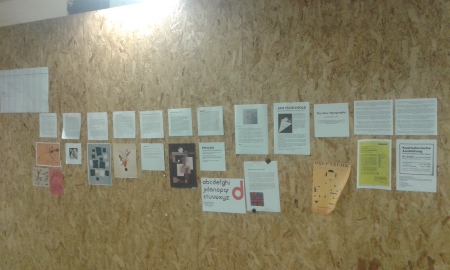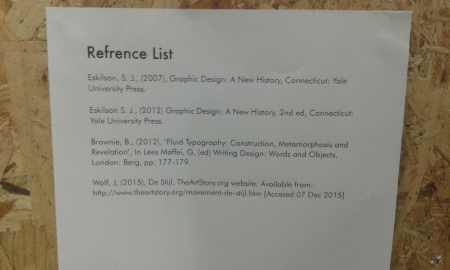The Enlightenment
The Enlightenment, also called ‘The age of reason’ was the time when politics, philosophy, science and communications in Europe around 1685-1815 were radically reoriented. It questioned traditional thought and searched for improvement of humanity trough rational change. The period itself was divided in three sections:
– Early Enlightenment: 1685-1730, discussing the mutual thought of human knowledge. Providing the scientific, mathematical and philosophical toolkit for the Enlightenment’s major advances.
– High Enlightenment: 1730-1780, the organizing of the world, the idea that we are able to put everything in a catalog, ages of enlightened despots. Time of religious and scientific innovations. The beginning of more socialized world of shared ideas was welcomed with coffeehouses, newspapers and literary salons emerged as new venues for ideas to circulate.
– Late Enlightenment and Beyond: 1780-1815, As the French Revolution its culmination. The idea to throw out the old authorities to remake society along rational lines.
What is the Modernism?
Art in the 20th century is characterized by an enormous richness, complexity, contradictoriness, self-reflectiveness compared to art in previous centuries as Nikos Stangos presents in his book. Because art movements were concurrent and there were a lot of mixtures in between them we can not talk about linear history. The world was vastly changing due to the open minded organisation and the ability to share ideas from open events. The movements were all with one desire to break the rules of the old structures and to create new ways to view the world. It had an amazing kick-off because of its significant difference of thinking, however, after the First World War there was a huge drop of creative thought leaving a footprint on generations of artists. However as Michael Levenson wrote in his book “Modernism” the emergence of these movements were not just the result of provoking artifacts, nor was it based on the succession of individual careers. Modernism was a heterogeneous episode in the history of culture, an entire new way of looking at the building components of the world and that could not have happened without artists communicating with each other and building on each other experiences.


Expressionism; Cubism; Futurism (F.T.Marinetti); Dadaism; Constructivism; De Stijl; Bauhaus; Jan Tschichold (The New Typography); Herbert Bayer (Universal); Photomontage; Pop art; Minimalism
Expressionism
There has actually never been such thing as Expressionism. The term was created in 1905 with the Dresden group of artists that called themselves Die Brucke and the Munich artists of the almanac Der Blaue Reite, so that it can unite a big quantity of twentieth-century art, especially in central Europe. It collects art that is emotionally charged and transmits a lot of expressive gestures. The movement was based on pictures from music due to the rise in awareness of artists to the directly affecting character of music, also elevated by Romanticism.
Cubism
Cubism was the most important revolution in early twentieth-century art. As a new movement it spread really quick through Europe and America with astonishing speed. It was a child of two artists Pablo Picasso and George Braque in between the years 1907 and 1914 and it was a result of seeing ‘non-Western’ art in a new way. The movement was recreated in every aspect of art and design and it main idea was to question art as it is, but not to destroy it. Cubism remained the single most important development in the history of twentieth-century art and an anchor point for the art from that moment on.
Futurism (F.T.Marinetti)
One of the first movement to break the ice of the symmetric system was Futurism shaped from the hands of Filippo Tommaso Marinetti. As a poet and fascist he wanted to express himself more loudly and and aggressively. In 1909 he remodel type, to make it better express his thoughts. Gave speed and dynamic to it, made it louder or quieter and more or less intensive. In most of his works he used type to express in-articulated sounds which presented the turbulent times.


Dadaism
After the world war there was a new art movement was reaching trough the ashes of the new world. In backlash of the mechanisation and the turbulent political events in the beginning of 20th century Dadaism was born. The center of the movement was Zurich, Switzerland as being neutral in the propaganda of the artists and poets. The appearance of which, in 1915, was against the government and the high classes. The main purpose of the new movement was to drew the attention of the public to those responsible for the war. Even though they didn’t have a lot of success, it led to new ways of thinking was the milestone of a lot of new movement around the world.


Constructivism
Cognitive and social in language, supposedly invented by the Russian artist Vladimir Tatlin, who assembled “corner constructions” in 1914, Constructivist movement become well familiar to people, but quite elusive. It become a technical term without even being define of its meaning to art circles. After Tatlin it gained meaning throughout his compatriots like Naum Gabo. Even though it failed to became a political overtone in 1920s it gained value by filling the need of art around the world in that time. It was loosely used by a lot of artist and become a basis of De Stijl. Constructivist movement carried out through the war years and was contently reminded by artists and new art schools. But in 1960 it took over as a post war undercurrent as the young artist of the time tried to counter the Abstract Expressionism, and found it in the hard, precise, preconceived geometry of the Constructivist idiom.
The Artist from the twentieth century turned to geometry as an inherited from the Classical world. They saw how shapes, precise and logical, can bring ordered of thoughts in space.

De Stijl
One of the major movement that stood out in the new Machine Age of 1920s was De Stijl. The movement began with and because of the magazine De Stijl. The movement might not have been a homogeneous group or school, but it was presented and promoted between 1917 – 1928 by the big Dutch painter, designer, writer and propagandist Theo van Doesburg (1883-1931). Crucial part in the vocabulary of the movement was the use of simple elements perceived as separate or as a whole. Its object was to contribute something towards the development of a new sense of beauty.


Bauhaus
New art school had tried to open the minds of a new generation people uniting the fine arts (architecture, painting, and sculpture) with the crafts. The founder and main engine of it was Walter Gropius (1883-1969) a German architect. As an advocate of the idea in 1919 he accepted the directorship of the Weimar Academy of Art and marked the beginning of the Bauhaus school. Due to its oppositional position of its times and its innovational visions the school suffered a lot from the political repressions around WW2. But by this way it gathered a lot of creative and very talented artist who spread Gropius’s vision after the schools closing by the Nancie.



The New Typography by Jan Tschichold
In the new machine age that the world was entering a real treatise on book and graphic design was The New Typography by Jan Tschichold published in Berlin in 1928. Inspired by the Bauhaus and De Stijl and the idea of the type as a tool for communication visually. The New Typography embrace the avant-garde ideas of the 20th century at a times when book printing was vastly improving the quality of the product. Because most typography of the times were still symmetrical, with medieval Textura being the most popular typeface, Tschichold became the mediator of a new movement of a new more simple typefaces, making it easier and more accessible to working designers and printers, which in addition was stressing clarity in communication, with form and function going hand in hand.




Herbert Bayer (Universal)
Part of the Bauhaus movement a new typeface was created as a need to get the whale movement established as a vision. The idea of creating the typeface Universal in 1925 was to achieve clarity and to unite the whole range of type used of the movement. The typeface was with simple, shape based and has used only upper case because of the need of simplicity.


Pop art
The term was used first in 1954 by Lawrence Alloway, a British critic, referring to popular art. The movement outlines the usage of popular images in a context of fine art. The art itself has a curious history incubating in the subterranean for around 5 years before it popped out. When it was revealed, the majority of people weren’t comfortable with it and critics didn’t like it because they thought it was missing the impact. Despite the invective Pop Art moved foreword because of the ease of use and the pitch on consumerist ideology, and it established itself in the collectors lists.

Minimalism
Minimalism as a movement stepped in in 1913 releasing art from the world of meaning. Its ideology was to detach art from religion, ideological functions and utilitarian purposes. It was constructed on mathematical structures and abstract visions. Artists from that movement believed that a work of art should be completely conceived by the mind before its execution and as so it should be open to interpretations. Closing the bare minimum in its frame it allowed for the viewer to create its own interpretation of the painting itself.

” Graphic design theory : readings from the field / edited “ by Helen Armstrong. – New York : Princeton Architectural Press, c2009
” Concepts of modern art : from fauvism to postmodernism / edited “ by Nikos Stangos – New York : Thames and Hudson, 1997 / 3rd ed., expanded and updated.
” Cubism/Neil Cox “ by Neil Cox – London : Phaidon, 2000.
” Constructivism : origins and evolution “ Rickey, George. – London : Studio Vista, 1968
” De Stijl / Paul Overy “ by Paul Overy – London: Thames and Hudson, 1991
” Dutch moderne : graphic design from De Stijl to deco “ by Steven Heller & Louise Fili – San Francisco : Chronicle Books, 1994
” De stijl : 1917-1931 : the dutch contribution to modern art “ Jaffe, H L C – Tiranti, 1956
” Bauhaus / Frank Whitford “ by Frank Whitford – London : Thames and Hudson, 1984Title: German Artists Found the Bauhaus. By: Rice, H. William, Salem Press Encyclopedia, January, 2015
” The new typography : a handbook for modern designers / Jan Tschichold “ ; translated by Ruari McLean, with an introduction by Robin Kinross Tschichold, Jan, 1902-1974 – London : University of California Press, 1995
” Jan Tschichold : master typographer : his life, work & legacy “ by Cees W. de Jong … [et al.] – London : Thames & Hudson, c2008
http://www.history.com/topics/enlightenment – Author: History.com Staff; Published: 2009
